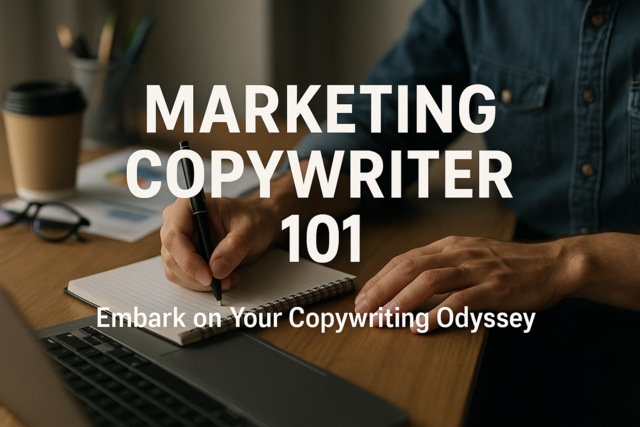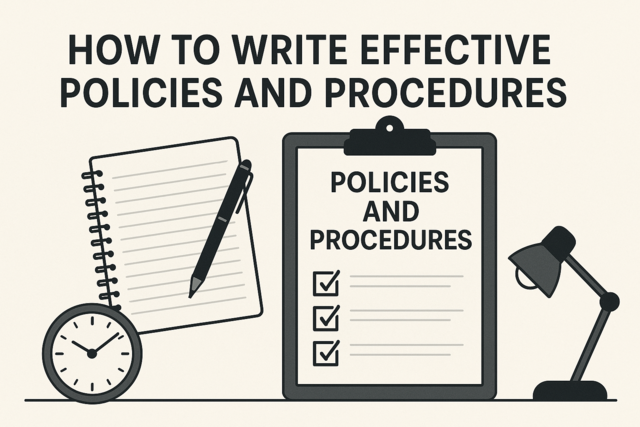Search Engine Optimization, or SEO, is the process of maximizing the number of visitors to a website by taking steps to get that website ranked high in search engine results. Whenever you do a search on Google or any other search engine, you are seeing the results of SEO. When you perform a search, the websites you see listed all used SEO techniques so that they would appear at the top of results.
Take a look at the search we performed using Google. We searched for "SEO".
The websites who ranked the highest for SEO are listed first. Although your job as a copywriter will never be to manage the search engine optimization for your clients' websites, creating optimized copy is critical to any company's SEO campaign. You may be asked to work with an SEO company or another part of your client's team to ensure the copy you write is optimized for results.
Terms to Know
Locate the terms below in the dictionary, then fill in the meaning of each word in your "Student Dictionary" by using Google or another search engine to find the definition.
1. SEO -- or Search Engine Optimization
2. Keyword density
3. Keyword frequency
SEO Yesterday and Today
It seems like just yesterday that SEO was about stuffing copy full of keywords and getting other sites to link to yours. The goal for writing optimized copy was to achieve the right keyword density and keyword frequency on each page of a website. The reason for this was because search engines looked for frequently occurring words and phrases.
When a word or phrase occurred frequently, the search engine determined that word or phrase was important to the web page and considered that page more important than pages from other websites that did not have the same frequency for the word or phrase.
Of course, that was not all there was to SEO. The size of the website, the number of other websites that linked to it, and other factors all helped to determine search engine ranking. However, what the search engines did not pay attention to was quality content. Because of that, unethical websites would stuff their pages with keywords. The content on those pages was usually difficult or impossible to read. It was low quality content at best. Needless to say, it was not the best way to ensure that the most relevant websites with the highest quality content appeared at the top of search engine results.
Fast forward to today, and the world of SEO has changed for the better. From the perspective of a copywriter, effective SEO techniques today include:
Creating quality content that serves its purpose while not worrying about SEO. In other words, write website copy that is valuable to people, not a search engine. Make it the highest quality possible.
Using social media posts to share the content on web pages. This creates natural links back to the website. It also represents quality and relevance in the "eyes" of search engines.
Using keywords that reflect the language your visitors use when searching or posting on social media. In other words, avoid using technical jargon in your copy. Only use the terms your target market would use.
SEO is important to your clients because it drives visitors to their website. Because the visitors used search terms that reflect the subject matter of the copy on the website, those visitors are more likely to be searching for the information, products, or services that your client offers.
Understanding Search Engines
Just in case you are not familiar with SEO or how search engines find websites in order to rank them, let's do a quick study of how search engines work.
Search engines crawl websites looking for content to index and factor into search results. Search engine "spiders" find the information on a web page and "read" it. They then follow the links on your webpages to other pages and read that content as well.
The spider stores the content that it finds in a large database. This is called indexing the content. This is the content someone will find when they perform a search. The most relevant content from all indexed websites appears higher in search results. Although search engines use a complex formula to determine which websites appear at the top of results, it is still important to use relevant keywords in your content - and to make sure they appear frequently, but naturally, in the copy.
That said, let's learn how to write quality copy that is properly optimized for the search engines.
Finding the Right Keywords
First of all, let's start off by making it clear that you should not use more than one or two keywords on each page of a website. Part of optimizing a page for SEO is making sure the copy that you write is focused on a topic. Think about it for a minute. You would never write a report on three or four different topics at once, because the quality of the report would be sacrificed so that you could cover all the topics. The same holds true for copy. Each page of a website should focus on one topic, and should focus on no more than one or two keywords.
Selecting the topic for copy is fairly easy. For example, a webpage about color-safe shampoo. However, selecting keywords for that topic is not quite as easy. You may be writing copy about color-safe shampoo, but that does not mean potential visitors are using the phrase "color-safe shampoo" when using a search engine to find information or products. Naturally, you want to find a keyword that visitors are using when they type their search terms into the search engine.
Always start out by asking your client if there are keywords you should use in the copy you write. If the client performs in-house SEO or works with an SEO agency, chances are that keywords have already been selected. Do not be afraid to ask about them. If the client does not have keywords for you to use, you may want to ask about their SEO efforts. The client may simply want you to determine the best keywords for a page, or may want you to work with another member of the client's team or the SEO agency.
If all else fails, you can use free keyword research tools that are available online. Just keep in mind that while we use the word "keyword" in this article, you want to search for keyword phrases to use. For example, a doctor would not simply use the word "doctor" as a keyword. Instead, the doctor might include what type of medicine he or she practices, as well as the city in which he or she is located.
Below is a snapshot of a free keyword research tool found online:
Enter a keyword you want to use. Best practice is to enter a word that represents the topic of your content. We are going to enter "volumizing shampoo".
The results are shown below.
Volume refers to the number of monthly searches. You can also see the average CPC - or cost per click. This refers to PPC - or pay per click ads. You can also see the value for the search term.
When using a keyword research tool:
You will see the keyword and keyword phrases used, plus the number of monthly searches using that keyword or keyword phrase. The more searches, the more competitive the keyword. This means it will be harder to rank for that keyword.
Try to select keywords or keyword phrases that are moderately competitive. You do not want to select keywords with minimal searches, but you do not want to select ones that every website is trying to rank for either.
Choose keywords or keyword phrases that are highly relevant to the copy. The more relevant, the better.
Keep in mind the language that your target market uses, and let that language affect your choice of keyword or keyword phrases. Take note of the language your target market uses on social media, in reviews, and in testimonials when selecting a search term. You want to select a keyword that reflects their language, but that also has a moderate number of searches each month.
Make sure that the keyword or keyword phrases you select will fit naturally into your copy. If you have to force yourself to use the keyword or keyword phrase in the copy, it might not be the most relevant choice.
Writing SEO Copy
Do not ever write copy for a keyword. Write the copy just to write the copy. The truth is that if you select a highly relevant keyword, you will not have to worry about adding it to the copy that you wrote. Instead, it will occur naturally. When you edit the copy, you may find instances where you used a pronoun, such as "it", instead of the keyword. If you can replace the pronoun with the keyword without making it sound stilted - or unnatural - then you can add the keyword in at that time.
For example: "This is where you can get it" can be edited to read "This is where you can get our sulfate-free volumizing shampoo."
You do not want to make it appear that you are stuffing the keyword in wherever possible. Not only is it a turn off for your visitors, it is also a turn off for the search engines. Write in the same way you would speak. The experts say the optimal keyword density is between 2-4%, which means the keyword or keyword phrase comprises 2-4% of your page's total word account. However, all experts agree that natural sounding copy is more important.
Write natural-sounding copy, and make sure that the keyword or keyword phrase is incorporated in the title tag for the page, as well as the headline. That said, though, make sure the headline is representative of the content on the page. Do not sacrifice a good headline for a keyword or keyword phrase. Remember, search engines are not visitors or customers. People are.
Look at the example again:
The visitor asks, "What's in it for me?"
The headline answers: "What is Life Coaching - and will it work for you?"
As you can see, the headline is not written for the keyword. Instead, it is written to give the visitor the information they are seeking.
NOTE: When using keyword phrases, you do not have to use the exact keyword phrase each and every time. It is okay to have variations. Again, it is more important to write natural-sounding copy.
About PPC Ads
Although writing PPC ads fall more to advertising copywriters, it is important that you understand what they are, as well as how they work. PPC ads can go hand-in-hand with your clients' SEO efforts because PPC ads rely on the same keywords you use on website pages. In fact, your client may ask you to write PPC ads designed to drive visitors to a certain page of the website.
PPC stands for Pay Per Click. According to MarketingTerms.com, PPC ads are defined as an "online advertising payment model in which payment is based solely on qualifying click-throughs. In a PPC agreement, the advertiser only pays for qualifying clicks to the destination site based on a prearranged per-click rate. Popular PPC advertising options include per-click advertising networks, search engines, and affiliate programs."
Pay per click ads can appear on a website or in search engine results, as shown in the snapshot below of a Yahoo search results page.
The PPC ads in the snapshot above appear at the top and to the right of search results.
When creating a PPC campaign, your client will select keywords to use for the PPC campaign. Whenever someone types one of those keywords into a search engine, your client's ad may appear with the search results. But just as with SEO, a number of factors determine whether your client's ad appears as one of the top ads on the page, such as how much your client was willing to spend per click.
A PPC ad contains the following elements:
1. A headline, which is limited to 25 characters. Notice that it is characters, not words. The headline should employ keywords from the ad group your client is using for the PPC campaign. If asked to write PPC ads, you will be given keywords.
2. Description Line 1. You are allowed 35 characters. Promote your offer with this first line. Be concise when writing a PPC ad. It is much like writing a classified ad in that you should use as few words as possible.
3. Description Line 2. You also are allowed 35 characters with this line. Continue your offer or write a call-to-action. Effective calls-to-action include Buy Now, Shop Today, Contact Us, and Sign Up.
4. Display URL. The URL customers will see when viewing the ad. If you look at the PPC ads in the snapshot above, you will see the display URL's.
5. Final URL. This URL is not displayed with the ad. Instead, it is the URL that visitors will be taken to when they click on the Display URL. Your website might be http://www.abc.com, and your landing page for the PPC ad might be http://www.abc.com/test-drive/free-paper/download. The simple link to your website would be the display URL, but the actual link to your landing page would be the Final URL.

























